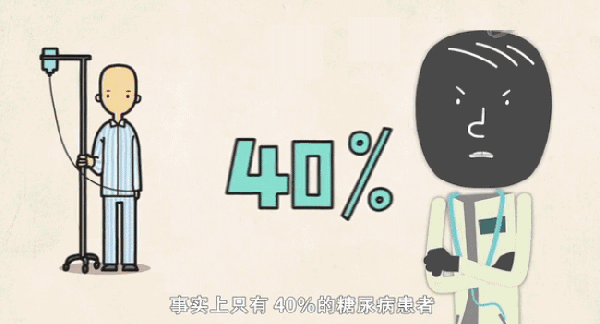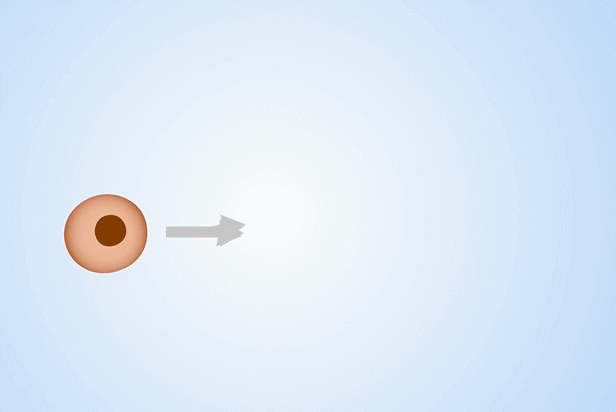
Source: Boyah Life
In July this year, Chinese scholars successfully completed the first international islet cell transplantation operation in which chemical reprogramming induced pluripotent stem cell differentiation in type 1 diabetic subjects. In recent years, the use of cells to treat diabetes has become a scientific hotspot. This article helps people understand the new progress of cell therapy for diabetes by reviewing the four key pathways of cell therapy for diabetes - stem cell-derived islet cell transplantation, adult stem cell transplantation, stem cell therapy for complications of diabetes, and other cell therapy pathways.
In July 2023, the Stem Cell Research Center of Peking University and Tianjin First Central Hospital successfully completed the first international islet cell transplantation operation of chemical reprogramming induced pluripotent stem cell differentiation in type 1 diabetes subjects. This treatment technology is expected to be an ideal solution to completely cure type 1 diabetes.
The subject, an 11-year history of type 1 diabetes, returned to normal activity on the day of the cell transplant, and the islet cells survived well. By day 10 after the transplant, the patient's blood sugar was stable and the daily insulin requirement had been reduced to half of what it was before the transplant. This treatment technology is expected to be an ideal solution to completely cure type 1 diabetes.
Type 1 diabetes (T1DM) is a chronic "incurable disease" that requires lifelong exogenous insulin intake. An estimated 490,000 children are affected worldwide. Autoimmune destruction of islet beta cells in the perinatal period leads to glucose metabolism disorders in children or adolescents, leading to hyperglycemia and ketoacidosis.

At present, the main treatment methods for type 1 diabetes are subcutaneous injection or insulin pump injection of insulin to obtain exogenous insulin for glucose metabolism. However, traditional treatment requires lifelong medication and close monitoring of blood glucose changes throughout life, which seriously affects patients' quality of life and makes them more prone to complications such as hypoglycemia and ketoacidosis.
The use of stem cells to develop immunotherapy program may become a new hotspot
At present, there are many studies on how to treat "incurable diseases", the most attention is from the fundamental treatment of diseases at the immune level. In the way of immunotherapy, the use of stem cells to develop immunotherapy program for the treatment of chronic incurable human diseases has become a research hotspot. Therefore, stem cell replacement therapy is expected to become a new way of medical development for the treatment of T1DM.
In November this year, at the "7th Yangcheng Diabetes and Obesity Forum and the Combination of Medical industry - Metabolic Disease Prevention and Treatment Frontier Academic Conference", experts and professors of the Third Affiliated Hospital of Sun Yat-sen University also emphasized the exploration of cellular immunotherapy for diabetes and complications.
Pathway One: Stem cell-derived islet cells for diabetes therapy
Regeneration and replacement therapy of islet beta cells is considered to be an effective way to cure T1DM, and stem cells have gained widespread attention as ideal seed cells, and the pluripotent stem cells (PSCs) currently available for clinical practice are embryonic stem cells (ESCs), induced pluripotent stem cells (iPSCs) and adult stem cells (ASCs).

Pluripotent stem cells act as seed cells to induce differentiation and repair or replace damaged pancreatic tissue through cell transplantation, which has become a new hope for the treatment of type 1 diabetes .
一、Islet cells erived from embryonic stem cells (ESCs)
Embryonic Stem Cells (ESCs) are embryonic stem cells with wide differentiation potential and can differentiate into various cell types in the human body. In research into the treatment of type 1 diabetes, ESCs are being considered for the generation of islet cells to replace those damaged by autoimmune attack in patients, thereby restoring normal insulin secretion. As early as 2006, D'Amour et al. [4] described islet cells differentiated by human embryonic stem cells (hESCs), which showed normal islet function in mouse models.
二、Islet cells derived from induced pluripotent stem cells (iPSCs)
Induced Pluripotent Stem Cells (iPSCs) are a special type of stem cell characterized by the fact that they can be obtained by reprogramming already differentiated cells without the use of embryonic cells. iPSCs have the potential to differentiate into multiple cell types, including islet cells, and are therefore considered a potential therapeutic approach that may be used to treat type 1 diabetes.
Tang et al. describe the first clinical trial using induced pluripotent stem cells (iPSCs) to treat type 1 diabetes in human patients. The patients received transplants of islet cells differentiated by iPSCs, and preliminary results in the study suggest that the patients made some progress in insulin secretion and blood sugar control.
三、Islet cells derived from adult stem cells (ASCs)
Adult Stem Cells (ASCs), also known as somatic cells, are stem cells found in adult tissues whose functions include repairing and replacing damaged cells. Unlike embryonic stem cells and induced pluripotent stem cells, adult stem cells have certain differentiation limitations and can usually only differentiate into the cell type of their source tissue, but it has some distinct advantages.
In terms of type 1 diabetes treatment, adult stem cells may be obtained from a patient's body tissues, such as bone marrow, adipose tissue, or liver, and then with proper treatment and culture, these cells may be induced to differentiate into islet cells for use in the treatment of type 1 diabetes.
One of the advantages of this approach is that adult stem cells are relatively easy to obtain, and because they come from the patient himself, there is less risk of immune rejection.
Pathway 2: Adult stem cell transfusion for diabetes
In recent years, the research results of directly transfusing adult stem cells, especially mesenchymal stem cells, to treat diabetes have been continuously output, and this path has become a new research trend of diabetes treatment.
A large number of experiments have shown that mesenchymal stem cell transfusion can significantly improve blood glucose metabolism disorder and restore insulin secretion of damaged islets in patients with type 1 and type 2 diabetes. A number of completed or ongoing clinical phase I/II trials have suggested that mesenchymal stem cell transfusion can effectively reverse hyperglycemia and reshape islet function in diabetic patients without significant adverse reactions.
Pathway 3: Stem cell therapy for diabetic complications
Diabetes complications are often more frightening than diabetes, mainly diabetic foot/severe lower limb ischemia. More than 2 million diabetic foot patients in China are amputated every year. Other complications include neuropathy, vascular disease, erectile dysfunction, etc. Stem cells to improve a variety of diabetes complications is also a key path for this technology to deal with diabetes.
For a long time, stem cell transplantation has been a hot topic in the treatment of diabetic complications. More and more research results show that stem cells have great potential for treating diabetic complications.
Pathway 4: Other cell therapy pathways
On June 28, the FDA approved the first cell therapy for patients with type 1 diabetes. This is the allogenic islet cell therapy developed by CellTrans, Lantidra, which is approved for the treatment of type 1 diabetes patients who are unable to reach their target A1C after repeated episodes of severe hypoglycemia, intensive diabetes management and education. The therapy uses allogeneic (donor) islet cell transplants made from pancreatic cells from a deceased donor.
The cell therapy works by infusing the patient with these allogeneic beta cells and producing enough insulin so that the patient no longer needs to inject insulin to control their blood sugar levels. This treatment is administered in a single hepatic portal vein, with additional Lantidra infusions depending on the patient's response to the initial dose.
Brief summary
In summary, the study shows that stem cells have a promising future in the treatment of type 1 diabetes and are expected to become a new medical development approach for the treatment of T1DM, but more research is needed in the future to overcome the challenges, including safety, efficacy, and long-term effects. With further research and clinical trials, we expect to see more results and promise from pluripotent stem cell therapy in the area of type 1 diabetes.